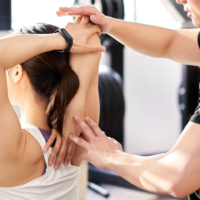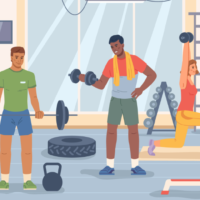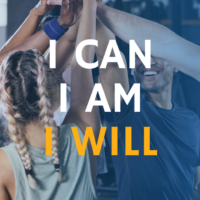Swimming Is Good for the Body and Soul
Not only is learning how to swim important for safety reasons, the sport of swimming opens the door to many swim related leisure and fitness activities. Swimming is an excellent cross training option, has many health benefits, and can be a good option for those looking for a low impact alternative when dealing with a temporary or chronic health condition or sports injury.
Cross Training
Swimming is an excellent fitness activity as it fires up more of your body’s major muscle groups than other forms of cardio exercise that focus on either your upper or lower body. Swimming is an all body sport and it is one of the most effective ways to burn calories. A gentle swim can burn over 200-300 calories in just half an hour, more than double that of walking.
- Front crawl (Freestyle) will work your legs, quads, hamstrings, arms, and trapezius. Reaching above your head with your arm to pull, will work your deltoid, anterior and your oblique.
- Back Crawl: Will work the same muscles as the front crawl in addition, your pectoral major, Rhomboid, your sternocleidomastoid, (neck) & your Gluteus Maximus.
- Breast Stroke and Butterfly: The primary muscles used in breaststroke are the hands, inner forearm, biceps, Pectorals, latissimus dorsi, groin, Gluteus Maximus, and calves. Working these muscles not only conditions them but tones them as well.

Health Benefits
There are many life-extending, heart-saving, mood-lifting benefits associated with swimming. Swimming improves your cardiovascular system, it also reduces your risk of heart disease and stroke and reduces your blood pressure and cholesterol levels. Swimming improves lung function and reduces your risk of suffering from bone or joint conditions, such as arthritis, later in life. Swimming can also improve your posture and prevent back injuries and pain that stem from long stretches of sedentary time.
Low Impact Alternative
If you are dealing with a sports-related injury or have a chronic condition like arthritis, water-based exercises such as Aquafit, Aqua-Aerobics, or water running along with leisure swim will help to improve the use of the affected joints without additional pain or discomfort as it is a low impact activity.
If you’d like to get started with swimming – start slow and don’t try too much, too early. Work with an instructor to ensure you’ve got the technique right. Start off with 30-minute sessions three times a week, and don’t forget to take frequent breaks. Ease into it and build up your endurance over time.
Come and talk to our Aquatics supervisors to see what Mayfair offers in terms of swimming lessons and programs or visit our website to learn more!
Recent Facebook Posts
Newsletter
Sign up
Join our Mayfair Newsletter for the latest member news, events, contests, promotions and blogs. You may unsubscribe at anytime by clicking the "unsubscribe" link at the bottom of all newsletter emails.
 Lakeshore (416) 466-3777
801 Lake Shore Blvd E Toronto, ON Lakeshore and DVPs
Lakeshore (416) 466-3777
801 Lake Shore Blvd E Toronto, ON Lakeshore and DVPs
 West (416) 638-1010
3855 Chesswood Dr Toronto, ON Sheppard and Dufferin
West (416) 638-1010
3855 Chesswood Dr Toronto, ON Sheppard and Dufferin
 Parkway (905) 475-0350
50 Steelcase Rd. E. Toronto, ON Woodbine and Steeles
Parkway (905) 475-0350
50 Steelcase Rd. E. Toronto, ON Woodbine and Steeles
 East (905) 475-8833
160 Esna Park Dr Markham, ON Denison and Victoria Park
East (905) 475-8833
160 Esna Park Dr Markham, ON Denison and Victoria Park




































